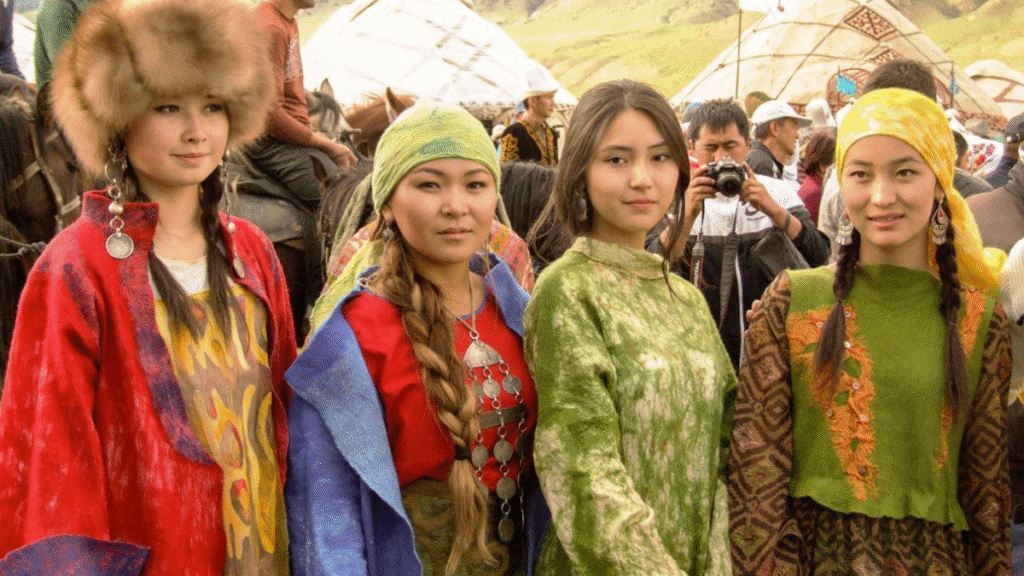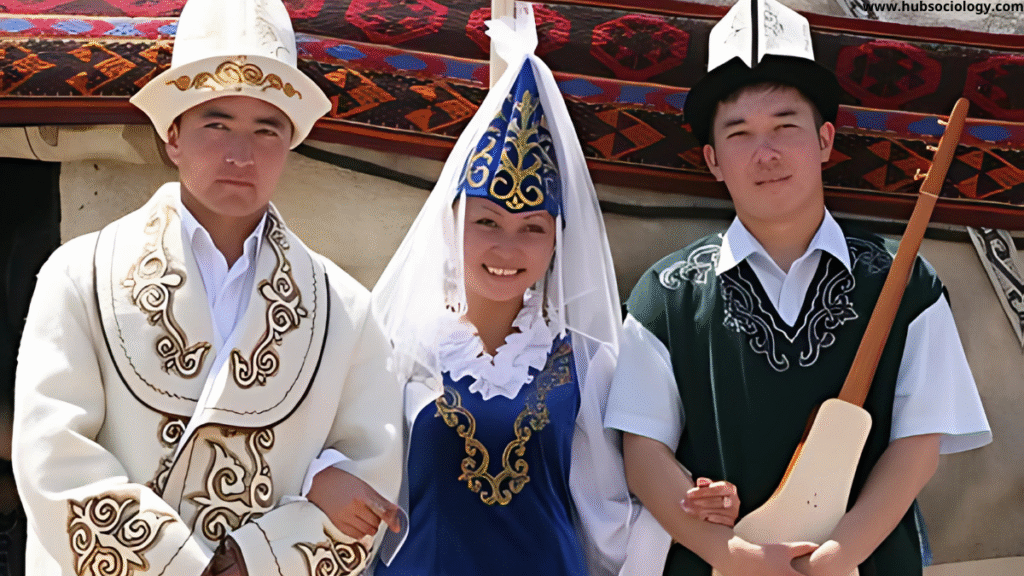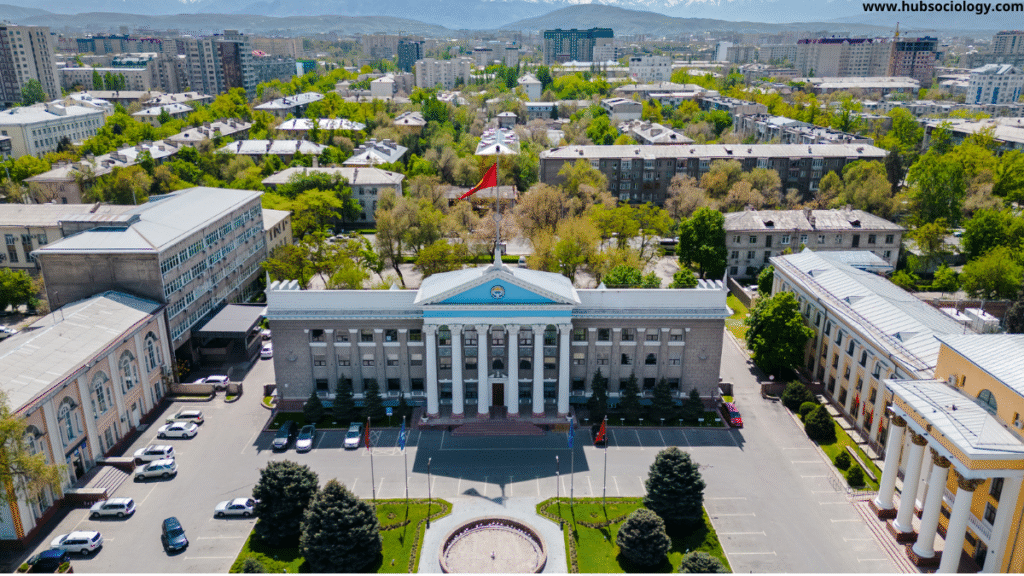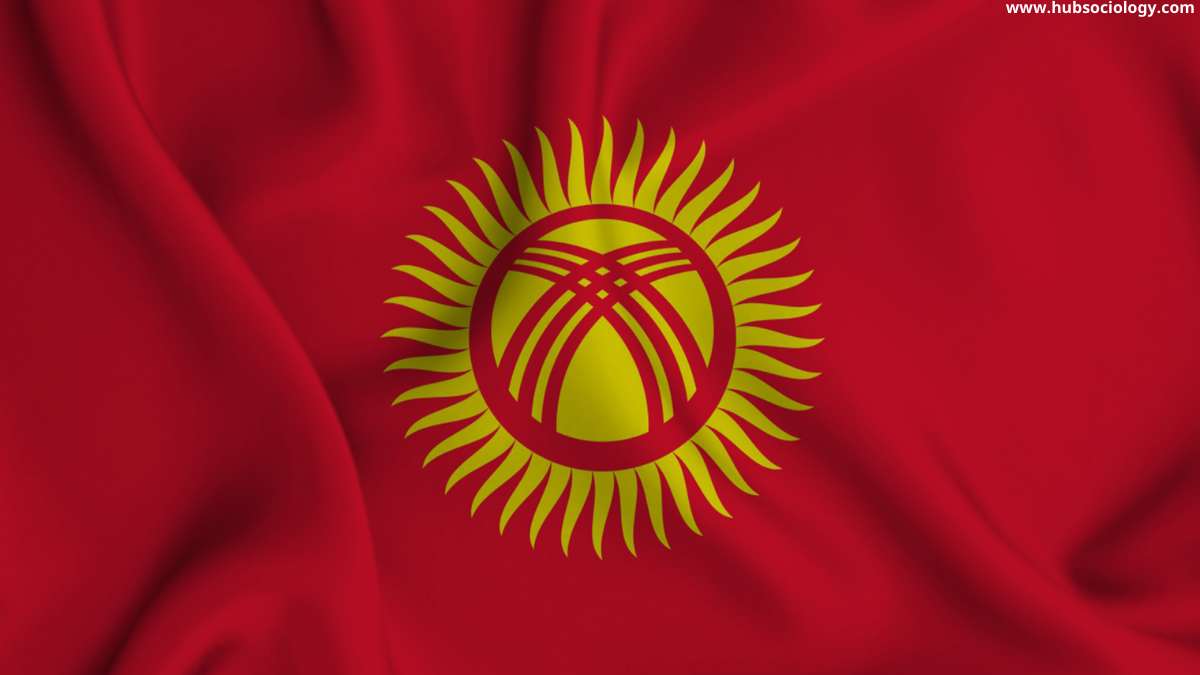Introduction
Kyrgyzstan, a landlocked Central Asian state, is often described as a “crossroads of civilizations.” Historically, it has been home to nomadic Turkic peoples, Persian-speaking traders, Mongol invaders, and, more recently, Russian settlers during the Tsarist and Soviet periods. This historical layering of populations has produced a country that is ethnically diverse despite its relatively small size and population. According to census data, Kyrgyz, Uzbeks, Russians, Dungans, Uighurs, and several other groups co-exist in the nation.
While such diversity enriches Kyrgyzstan culturally, socially, and economically, it has also been a source of inter-ethnic tensions, sometimes escalating into violent conflict. The sociological study of ethnic diversity and tensions in Kyrgyzstan is important because it reveals how identities are constructed, how power relations are mediated through ethnicity, and how structural inequalities create the conditions for conflict. This article explores the ethnic landscape of Kyrgyzstan, the roots of inter-ethnic tensions, and the sociological implications of diversity and conflict in a multi-ethnic state.

Ethnic Composition of Kyrgyzstan
Ethnic diversity in Kyrgyzstan is shaped by both historical migrations and Soviet-era demographic engineering.
- Kyrgyz: The titular ethnic group constitutes around 70% of the population. They are traditionally pastoral nomads with a strong clan-based social structure. Kyrgyz identity is closely tied to language, culture, and Islam, though with syncretic elements of nomadic traditions.
- Uzbeks: Around 15% of the population, Uzbeks are concentrated in the southern regions, especially in Osh and Jalal-Abad. They are traditionally sedentary, engaged in agriculture and trade. Their urban and commercial orientation has historically contrasted with the Kyrgyz pastoral heritage.
- Russians: Once making up a significant portion of the population during the Soviet Union, Russians now account for less than 10%. They are mainly urban and engaged in administrative, technical, and educational professions.
- Minorities: Dungans (Chinese Muslims), Uighurs, Tajiks, Koreans, and others form smaller communities, each adding to the cultural mosaic.
This diversity reflects Kyrgyzstan’s geopolitical position as a historical meeting point of nomadic and sedentary civilizations, Islam and Christianity, East and West.
Sociological Theories and Frameworks
Understanding ethnic diversity and tensions in Kyrgyzstan requires engagement with sociological theories of ethnicity and conflict.
- Primordialism: Suggests that ethnic identities are deep-rooted, almost natural, and difficult to transcend. From this perspective, the conflicts between Kyrgyz and Uzbeks are seen as expressions of ancient cultural differences—nomadic vs. sedentary, Turkic vs. Turkic-Persian traditions.
- Constructivism: Views ethnicity as a socially constructed identity shaped by historical, political, and economic contexts. The Soviet system, which institutionalized ethnicity through passports and territorial divisions, played a central role in creating rigid ethnic boundaries in Kyrgyzstan.
- Instrumentalism: Emphasizes that ethnicity can be mobilized by elites for political or economic purposes. In Kyrgyzstan, politicians have often exploited ethnic narratives to consolidate power, especially during periods of political instability.
- Conflict Theory (Marxist Lens): Sees ethnic conflict as rooted in economic inequalities and competition over scarce resources. The tensions between Kyrgyz and Uzbeks in the south can be understood through struggles over land, trade, and political representation.
Historical Context of Ethnic Relations
Pre-Soviet and Tsarist Period
Kyrgyzstan’s ethnic diversity originates in centuries of migration and empire-building. The Kyrgyz were primarily nomadic herders, while Uzbeks settled as traders and farmers in fertile valleys. With the Russian conquest in the 19th century, new groups like Slavs and Tatars were introduced, reshaping local demographics.
Soviet Legacy
The Soviet Union institutionalized ethnicity in ways that still shape Kyrgyzstan’s social fabric. Nationality was inscribed on internal passports, fixing ethnic identity as a formal category. At the same time, Soviet industrialization and collectivization brought economic opportunities but also social stratification. Russians often held privileged administrative positions, while Uzbeks dominated trade, and Kyrgyz were concentrated in pastoral and rural sectors.
Importantly, Soviet policies of “korenizatsiya” (indigenization) aimed to promote local elites, but this also reinforced ethnic divisions by creating titular republics and privileging specific groups in their homelands.
Post-Independence Transformations
When Kyrgyzstan gained independence in 1991, it faced an identity crisis: whether to build a civic nation inclusive of all ethnic groups or to emphasize Kyrgyz cultural revival. The latter path often dominated, leading to the marginalization of minorities, especially Russians and Uzbeks, in politics and public life.
Ethnic Tensions and Conflict

The Osh Conflict of 1990
One of the earliest and most violent episodes of inter-ethnic conflict in Kyrgyzstan occurred in Osh in 1990, just before the collapse of the Soviet Union. Tensions between Kyrgyz and Uzbeks over land distribution escalated into riots, leaving hundreds dead and thousands displaced. This conflict highlighted both economic competition and state weakness in managing ethnic relations.
The 2010 Ethnic Clashes
Another major outbreak occurred in June 2010 after the ouster of President Kurmanbek Bakiyev. In the southern cities of Osh and Jalal-Abad, Kyrgyz-Uzbek clashes resulted in nearly 500 deaths, massive destruction of property, and displacement of over 400,000 people. The violence revealed deep-seated resentments: Kyrgyz perceived Uzbeks as economically dominant, while Uzbeks felt politically excluded.
These events illustrate how structural inequalities, weak governance, and political instability interact with ethnic identities to produce violent outcomes.
Sociological Dimensions of Ethnic Tensions
- Identity and Belonging
Ethnicity is a key marker of identity in Kyrgyzstan. The titular Kyrgyz majority often define national belonging in ethnocultural terms, leaving minorities feeling like second-class citizens. For Uzbeks, who are concentrated in particular regions, this creates a sense of exclusion from the national project. - Social Stratification and Inequality
Economic roles are often stratified along ethnic lines. Uzbeks dominate small business and trade in the south, while Kyrgyz are more prevalent in state employment and rural agriculture. Russians and other Slavs, despite their declining numbers, still hold certain professional niches. These divisions reinforce stereotypes and perceptions of unfair advantage. - Language Politics
Language is a central arena of tension. While Kyrgyz is the state language, Russian retains official status and practical dominance in administration and business. Uzbeks, however, face challenges in education and public life as Uzbek-language schools decline and state services prioritize Kyrgyz and Russian. This creates cultural marginalization. - Political Representation
Minorities, especially Uzbeks, are underrepresented in political institutions. This lack of voice in governance exacerbates feelings of alienation and fuels grievances, particularly when combined with economic disparities. - Role of Elites and Mobilization
Political elites have often mobilized ethnic narratives to strengthen their own positions. In times of political instability, elites may scapegoat minorities or highlight ethnic differences to divert attention from broader governance failures.
Everyday Interactions and Coexistence
Despite high-profile conflicts, it is important to note that ethnic groups in Kyrgyzstan also experience extensive everyday interaction and coexistence. Inter-ethnic marriages, shared marketplaces, and neighborhood relations often create bonds that transcend formal boundaries. Sociologically, this demonstrates the dual nature of ethnicity—it can divide in times of crisis but also coexist in daily life through pragmatic cooperation.
Global and Regional Context
Kyrgyzstan’s ethnic tensions cannot be understood in isolation.
- Regional Factors: Border tensions with Uzbekistan, porous boundaries, and cross-border kinship ties influence local ethnic relations.
- Globalization and Migration: Large-scale labor migration (mostly Kyrgyz working in Russia) has reshaped demographics and household economies. This, in turn, alters perceptions of ethnic roles inside Kyrgyzstan.
- Geopolitics: Russia, China, and Western powers all have stakes in Kyrgyzstan. External actors often prefer stability but may indirectly influence ethnic relations through policies, investments, and ideological influence.
Policy Responses and Challenges
- Nation-Building Dilemma
Kyrgyzstan struggles between an ethno-national model of identity (centered on Kyrgyz language and culture) and a civic model that would embrace all citizens equally regardless of ethnicity. The unresolved nature of this dilemma perpetuates tensions. - Legal and Institutional Framework
While the constitution guarantees minority rights, implementation is weak. Ethnic minorities often face barriers in education, public employment, and political participation. - Peacebuilding Efforts
After the 2010 violence, various NGOs, international organizations, and local initiatives promoted inter-ethnic dialogue and community development. While these efforts have reduced tensions in some areas, structural inequalities remain largely unaddressed.
Sociological Implications
From a sociological standpoint, ethnic diversity and tensions in Kyrgyzstan highlight several key insights:
- Ethnicity as a Double-Edged Sword: It provides belonging and cultural richness but also serves as a fault line in contexts of inequality.
- Institutionalization of Difference: Soviet and post-Soviet policies show how state structures can harden ethnic categories, making them politically salient.
- Conflict as a Social Process: Ethnic violence does not emerge spontaneously but through processes of mobilization, inequality, and elite manipulation.
- The Role of Everyday Practices: While structural factors matter, daily practices of coexistence also shape the resilience of multi-ethnic societies.
Pathways Toward Inclusion and Stability
- Promoting Civic National Identity
Shifting from an ethnocultural to a civic model of nationhood could help build a sense of belonging for all citizens. This requires emphasizing shared citizenship over ethnic difference. - Equitable Economic Development
Reducing economic disparities between ethnic groups, particularly addressing grievances of Uzbeks in the south, is critical for long-term stability. - Inclusive Political Representation
Strengthening mechanisms for minority participation in governance can reduce feelings of exclusion and enhance trust in state institutions. - Language and Cultural Rights
Supporting multilingual education and cultural rights can foster inclusivity without erasing minority identities. - Community-Level Peacebuilding
Encouraging grassroots initiatives that bring together diverse groups can counteract elite-driven divisiveness.
Conclusion
Kyrgyzstan’s ethnic diversity is both its strength and its challenge. The coexistence of Kyrgyz, Uzbeks, Russians, and other minorities reflects the country’s rich historical legacy as a crossroads of civilizations. Yet, structural inequalities, politicization of ethnicity, and weak governance have repeatedly turned diversity into a source of tension and conflict.

From a sociological perspective, the story of ethnic diversity in Kyrgyzstan illustrates the complex interplay of identity, power, and inequality. Ethnicity is not merely a primordial attachment but a socially constructed and politically manipulated category that can either foster solidarity or fuel division.
The future of Kyrgyzstan depends on whether it can move beyond ethnocentric nation-building toward a more inclusive civic identity that embraces all its citizens. Addressing structural inequalities, promoting inclusive governance, and fostering inter-ethnic dialogue are essential steps in this direction. Ultimately, the sociological study of Kyrgyzstan’s ethnic diversity reminds us that multi-ethnic societies can either fracture along their differences or harness them as a source of resilience—depending on how they are structured, governed, and imagined.
Do you like this this Article ? You Can follow as on :-
Facebook – https://www.facebook.com/hubsociology
Whatsapp Channel – https://whatsapp.com/channel/0029Vb6D8vGKWEKpJpu5QP0O
Gmail – hubsociology@gmail.com
FAQs: Ethnic Diversity and Tensions in Kyrgyzstan
1. What are the major ethnic groups in Kyrgyzstan?
The Kyrgyz (about 70%) form the majority, followed by Uzbeks (15%), Russians (under 10%), and smaller groups like Dungans, Uighurs, and Tajiks.
2. Why is Kyrgyzstan considered ethnically diverse?
Due to its historical role as a crossroads of Central Asia, Kyrgyzstan has hosted nomads, traders, settlers, and migrants from different empires, producing a multicultural and multi-ethnic society.
3. What are the main sources of ethnic tension in Kyrgyzstan?
Tensions arise from economic inequalities, competition over land and trade, language politics, political underrepresentation of minorities, and elite manipulation of ethnic identities.
4. What was the Osh conflict of 1990?
It was a violent clash between Kyrgyz and Uzbeks in the southern city of Osh over land and resources, resulting in hundreds of deaths and large-scale displacement.
5. What happened during the 2010 ethnic clashes in Kyrgyzstan?
In June 2010, following political upheaval, violent clashes erupted between Kyrgyz and Uzbeks in Osh and Jalal-Abad, killing nearly 500 people and displacing around 400,000.
6. How do sociologists explain ethnic conflict in Kyrgyzstan?
Through theories like primordialism (deep-rooted differences), constructivism (socially constructed identities), instrumentalism (elite manipulation), and conflict theory (economic inequality).
7. How does language affect ethnic relations in Kyrgyzstan?
Kyrgyz is the state language and Russian is an official language, but Uzbek is marginalized. Decline of Uzbek-language schools has deepened feelings of exclusion among Uzbeks.
8. Why are Uzbeks often seen as marginalized despite being a large minority?
Although Uzbeks dominate trade and small business in the south, they are underrepresented in politics and state institutions, which fuels perceptions of inequality.
9. What role did the Soviet Union play in shaping Kyrgyzstan’s ethnic relations?
The Soviet system institutionalized ethnicity through passports and territorial divisions, while also stratifying economic roles among ethnic groups, leaving a legacy of rigid boundaries.
10. What steps can help reduce ethnic tensions in Kyrgyzstan?
Promoting a civic national identity, ensuring fair political representation, addressing economic disparities, protecting minority languages, and fostering inter-ethnic dialogue at the community level.
